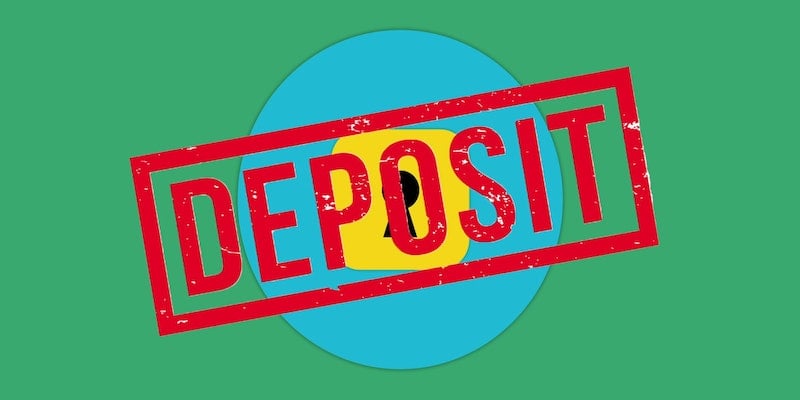Advertisement
Advertisement
Why 3x ETFs Are Riskier Than You Might Think
Dec 08, 2024 By Rick Novak
Do you have a portfolio of regular exchange-traded funds (ETFs) and want to add the potential for greater returns? If so, 3x ETFs are worth taking a closer look at. They can give you the added potential for greater reward.
But only if you understand their increased risks. Sadly, many investors need to realize just how much riskier these leveraged products can be compared with regular ETFs.
In this post, we'll examine why that is and provide some practical tips on best using them in your portfolio.
Explain What 3x ETFs Are and How They Work
3x ETFs are exchange-traded funds that seek to provide three times the return of an underlying index or asset. Such a fund can be leveraged for up to 300 percent of its benchmark returns, as opposed to a standard fund which only provides 100 percent of the index or asset's performance. A 3x ETF might invest in derivatives or futures contracts to achieve this goal.
Why 3x ETFs Are Riskier Than You Might Think
Despite their potential for high returns, 3x ETFs carry a greater degree of risk than more traditional investments:
1. They are highly leveraged, meaning that even small moves against the fund can result in large losses.
2. They can be highly volatile and difficult for investors to predict.
3. They are usually more expensive than other ETFs, requiring more capital to purchase and maintain the necessary derivatives or futures contracts.
4. Their performance is also not guaranteed, so investors may lose money if the ETF does not perform as expected.
5. They can be difficult to sell, and investors may incur significant losses if they need to exit their positions quickly.
Investors need to consider all of these risks before investing in 3x ETFs. Although such funds can offer high returns, they also carry significant risks and may only suit some investors. Before investing in 3x ETFs, it is important to understand the risks and make an informed decision that best fits your personal financial goals.
Discuss the Pros and Cons of Investing in 3x ETFs
Though 3x ETFs can be risky investments, some potential benefits should be considered.
Pros:
1. The potential for higher returns than that of a traditional ETF.
2. Allows investors access to more complex markets and strategies.
3. Can provide diversification and potential hedging advantages over other types of investments.
Cons:
1. Very high level of risk compared to traditional ETFs.
2. Returns are not guaranteed and can be unpredictable due to using derivatives or futures contracts.
3. It Can be expensive, requiring more capital than regular ETFs.
4. It May be difficult to sell and incur significant losquicklyurry.
Investors should weigh the potential rewards of 3x ETFs against their increased risks before investing. While there is potential for higher returns, it is important to understand that these investments come with greater risks than traditional ETFs.
Consider the Dangers of Volatility with 3x ETFs

One of the biggest dangers with 3x ETFs is their high volatility. Because these investments are leveraged, even small changes in the underlying index or asset can greatly affect the fund's value. This can result in significant losses if the move goes against your position.
For this reason, it is important to understand the market and be aware of any potential risks that could affect your investment. Considering all possible outcomes before deciding whether to invest in 3x ETFs is important.
Finally, it is important to note that these investments should only be part of an overall strategy. They should never be relied upon as a sole source of investment and should not be used to make large, risky bets.
3x ETFs can offer the potential for high returns but also carry a greater degree of risk than more traditional investments. Investors should understand all the risks associated with these funds before investing in them and use other sources for diversification and hedging.
By considering these investments' potential rewards and risks, investors can make an informed decision that fits their financial goals and risk tolerance.
Analyze Historical Performance and the Impact on Returns
Before investing in 3x ETFs, it is important to analyze their historical performance. This will help investors understand the potential for returns and how volatility could affect their investments. By looking at the historical performance of a particular fund, investors can gain insight into how it might perform in different market environments, as well as what kind of risks they might face.
When analyzing their historical performance, investors should consider the impact of fees and other costs associated with 3x ETFs. Fees can significantly reduce potential returns, so understanding how they affect the fund is important for making an informed investment decision.
By understanding the risks, rewards, and historical performance of 3x ETFs, investors can decide whether these investments fit their financial goals. 3x ETFs can be risky but have the potential for high returns, and understanding how to navigate them is key to successful investing.
Advise Caution When Deciding to Invest in 3x ETFs

The risks associated with 3x ETFs are greater than those of traditional ETFs and should be considered when making an investment decision. Investors should understand the market, analyze historical performance, and consider fees and costs before investing in these funds.
Furthermore, 3x ETFs should only be considered part of a larger, diversified portfolio and should never be treated as a stand-alone investment. By approaching this type of investment cautiously and taking the time to understand the risks and rewards associated with them, investors can make informed decisions that fit their financial goals. Investing in 3x ETFs is a great way to earn higher returns than traditional investments, but it is important to understand the risks before getting involved.
The potential for high returns associated with 3x ETFs can be tempting for investors; however, it is essential to understand why these investments are riskier than more traditional ones. Investors should consider the dangers of volatility, analyze historical performance and consider all related fees and costs before deciding to invest.
FAQs
Why are triple leveraged ETFs bad?
Triple-leveraged ETFs can be a bad investment if the investor does not understand the associated risks and fails to properly diversify their portfolio. These investments are much more volatile than traditional investments, carry higher fees, and can experience large losses quickly.
What is the difference between 3x and 2x ETFs?
The main difference between 3x and 2x ETFs is their leverage level. A 3x fund uses three times the leverage of a traditional index, which means that it has the potential to provide much greater returns but also carries a higher degree of risk.
What are the risks associated with 3x ETFs?
The primary risk associated with 3x ETFs is volatility. These funds can experience large losses quickly, and they typically have higher fees than traditional investments, which can reduce potential returns.
Conclusion
Getting the most out of 3x ETFs boils down to understanding the pros and cons. On the one hand, they offer great potential for higher rewards but with significantly greater risks. Proper diversification, a proper understanding of risk preferences, and strong risk management are key to effectively tapping into this powerful tool.
On this page
Explain What 3x ETFs Are and How They Work Why 3x ETFs Are Riskier Than You Might Think Discuss the Pros and Cons of Investing in 3x ETFs Pros: Cons: Consider the Dangers of Volatility with 3x ETFs Analyze Historical Performance and the Impact on Returns Advise Caution When Deciding to Invest in 3x ETFs FAQs Why are triple leveraged ETFs bad? What is the difference between 3x and 2x ETFs? What are the risks associated with 3x ETFs? Conclusion
Understanding Single-Premium Life Insurance: A Comprehensive Guide

Difference between Fixed and Variable Deposit Interest Rates

Selling Shares Before the Ex-Dividend Date: Maximizing Returns

Deciphering Hedge Funds: Balancing Returns and Fees

How Venture Capitalists Make Investment Choices?

Frac Sand Scarcity: Meeting the Growing Demand

Why 3x ETFs Are Riskier Than You Might Think

All about Financial Statements Explained



